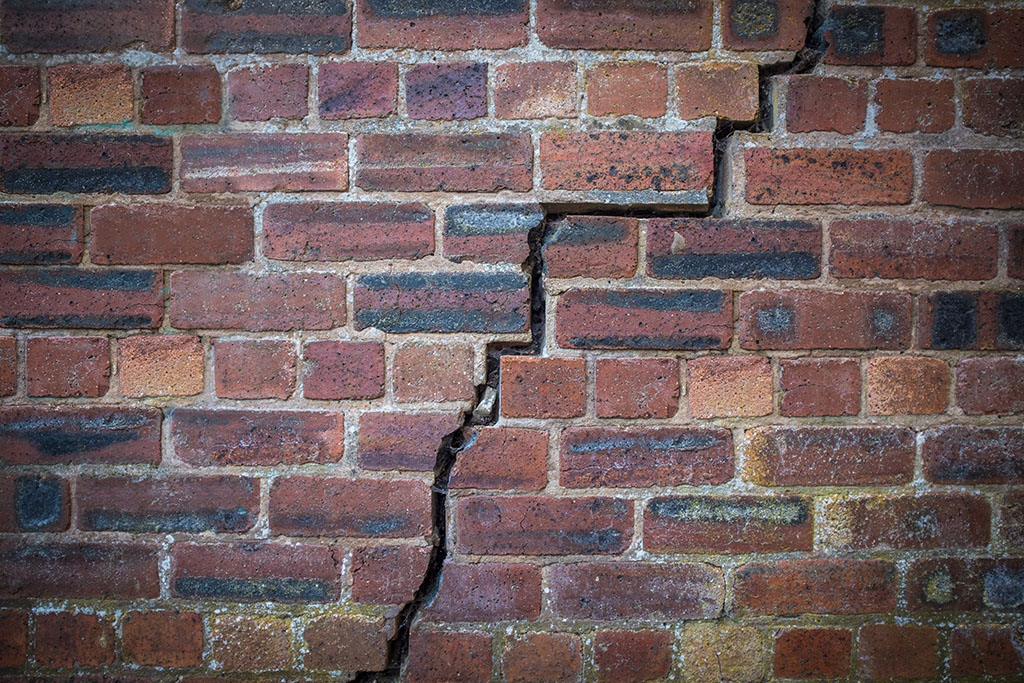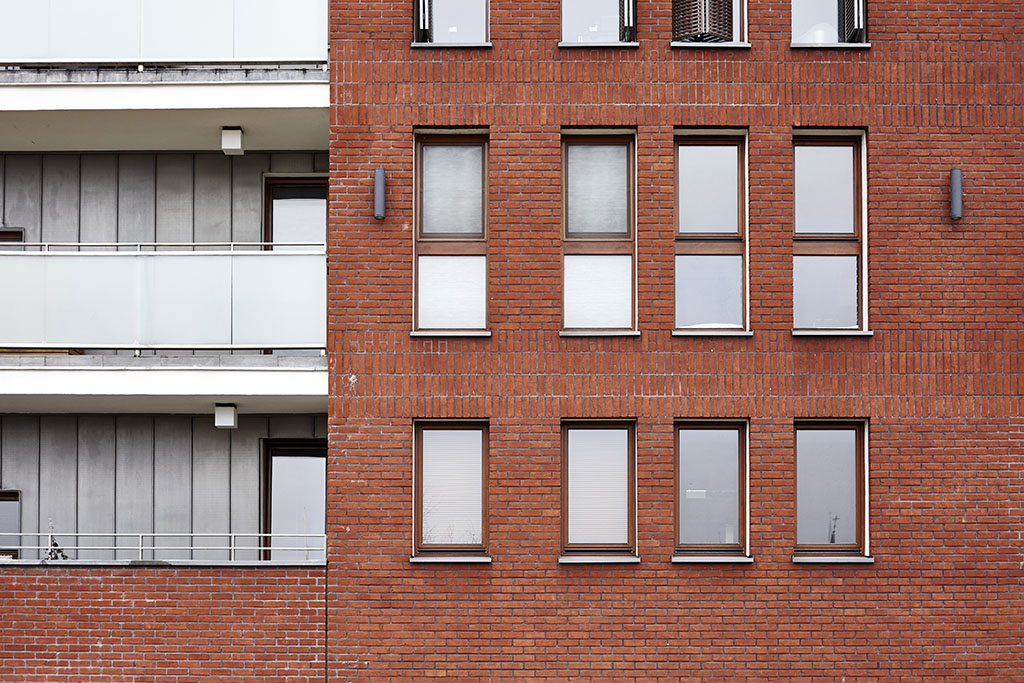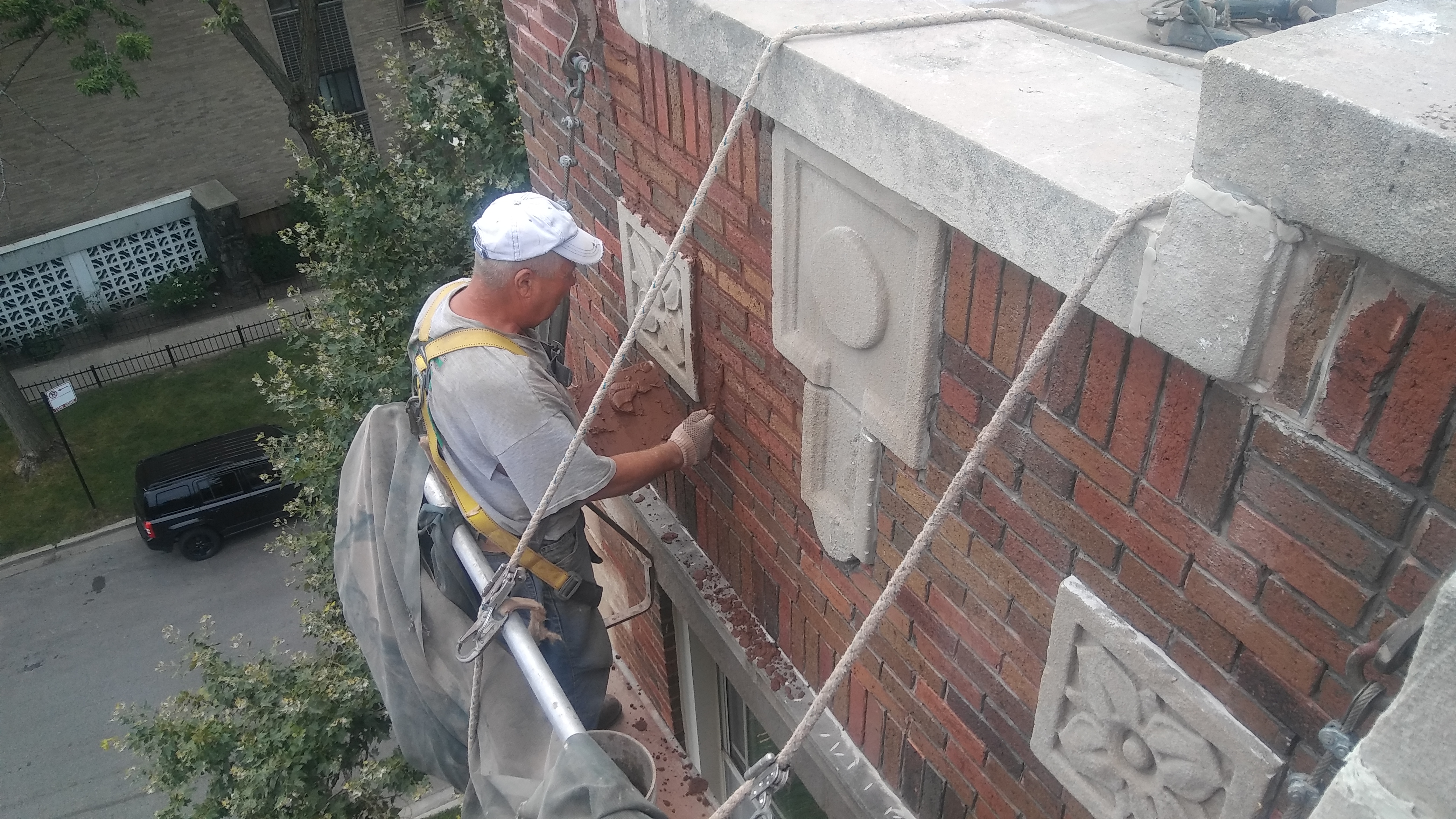Before delving into the specific signs of masonry deterioration, let’s establish the critical role that masonry plays in our buildings. Masonry, which includes brick, stone, and concrete, is not merely the foundation and walls of our structures; it’s a symbol of stability and endurance. Throughout history, masonry has been celebrated for its durability and architectural charm. However, like all things, it’s not immune to the passage of time and the elements. Masonry maintenance is the key to preserving both the aesthetic and structural integrity of our buildings. In this guide, we’ll explore the common signs that indicate your masonry might be in trouble, helping you spot deterioration early and take the necessary steps to ensure the longevity of your architectural investments.

The Silent Culprits: Understanding What Causes Masonry Deterioration
To truly understand the importance of identifying masonry deterioration, it’s essential to comprehend the underlying causes. Masonry, consisting of brick, stone, and concrete, is renowned for its durability and timelessness, but it is not impervious to the forces of nature and time. In this chapter, we delve into the key factors that contribute to masonry deterioration, providing you with insights that can help you spot issues early and take necessary steps to preserve your architectural investments.
Weather as the Primary Culprit:
Masonry deterioration is often initiated by weather conditions. Two natural elements, in particular, play a significant role: rain and freeze-thaw cycles. Rainwater can slowly, but relentlessly, erode masonry materials over time. Freeze-thaw cycles, common in regions with fluctuating temperatures, cause moisture to penetrate masonry. When this moisture freezes, it expands and exerts pressure on the masonry, resulting in cracks and other forms of damage. Understanding the dynamic interaction between masonry and weather is crucial in recognizing early signs of trouble.
Additional Contributing Factors:
In addition to weather, masonry deterioration can be attributed to poor construction practices and the use of substandard materials. Buildings constructed without proper drainage systems can trap water within the masonry, hastening the deterioration process. Moreover, the quality of materials used in construction significantly influences masonry longevity. Low-quality bricks, inadequate mortar, or the improper mixing of materials can weaken the structural integrity of masonry. These factors collectively create vulnerabilities that result in deterioration over time.
The Importance of Timely Action:
Recognizing the underlying causes of masonry deterioration is the first step in preserving your architectural assets. It underscores the significance of proactive maintenance and taking corrective measures when needed. By addressing issues related to weather, construction practices, and material quality, you can extend the life of your masonry structures, ensuring that they continue to be symbols of endurance and stability for generations to come.
Understanding the forces at play in masonry deterioration is pivotal, but the next step is identifying visible signs of a problem. In the following chapter, we will discuss these visual cues, which can range from small cracks to crumbling surfaces, providing you with the tools needed to spot early deterioration.
Tackling Time: Age-Related Deterioration
Masonry structures, while renowned for their durability and longevity, are not immune to the passage of time. Just as we all show signs of aging, even the most well-constructed masonry buildings may begin to exhibit wear and tear over the years. In this chapter, we’ll explore age-related factors that contribute to masonry deterioration and how to distinguish these normal signs of aging from more severe issues.
Normal Wear and Tear:
As masonry ages, it’s normal for some wear and tear to occur. This can manifest as small cracks in the mortar joints or minor chips in the bricks or stones. While these issues may not pose an immediate threat to the structural integrity of the masonry, they still require attention to prevent them from worsening. Regular maintenance, such as repointing (renewing the external part of mortar joints), can address these minor concerns, ensuring they don’t evolve into larger, more problematic issues.
Signs of Age-Related Deterioration:
Age-related deterioration may also result in efflorescence, which is the appearance of white, powdery deposits on the masonry’s surface. This occurs when water evaporates, leaving behind mineral deposits. While efflorescence itself isn’t harmful to the masonry, it can indicate excessive moisture infiltration, which, if left unchecked, may lead to more severe problems.
Furthermore, the color of the masonry may change over time. This is due to exposure to environmental factors such as sunlight and air pollutants. While color changes are normal and often contribute to the aesthetic character of older buildings, it’s important to distinguish them from the more serious signs of deterioration.
Differentiating Normal Aging from Serious Issues:
Differentiating between the natural aging process and serious issues requiring attention can be a challenge. Here are some factors to consider:
Severity: Small, fine cracks in the mortar joints are normal, but large, gaping cracks that compromise the structure are not.
Efflorescence: Occasional efflorescence is typical, but excessive efflorescence may indicate water infiltration issues.
Color Changes: Gradual color changes are normal, but abrupt shifts in color may signal problems with the masonry.
Structural Soundness: If the masonry remains stable and secure, it’s likely exhibiting typical signs of aging. However, if there are concerns about the stability of the structure or safety issues, professional evaluation is essential.
Recognizing that masonry structures, like all things, are subject to age-related deterioration is fundamental to understanding how to care for them. By distinguishing between normal aging and more severe problems, you can take appropriate action to preserve the timeless beauty and structural integrity of masonry buildings. This includes regular inspections, addressing minor issues promptly, and seeking professional guidance when necessary. Remember, many historic masonry structures have gracefully weathered the test of time, proving that with care, these architectural wonders can continue to stand proudly for centuries.

Preservation and Restoration: Addressing Masonry Deterioration
Recognizing the signs of masonry deterioration, whether they are due to weather, water, or the natural aging process, is only the beginning of preserving these architectural treasures. In this chapter, we’ll delve into the strategies for addressing these issues, ensuring the longevity and continued beauty of masonry structures.
Regular Maintenance:
Preventive maintenance is the cornerstone of preserving masonry. It involves routine inspections and timely repairs to address minor issues before they escalate. This includes tasks like repointing (renewing the mortar joints), cleaning, and sealing the masonry. Regular maintenance is crucial because it helps prevent more extensive damage and the associated costs of major repairs or restoration.
Repairs:
When damage to masonry is identified, it’s essential to act promptly. Repairs can range from patching small cracks to replacing damaged bricks or stones. Mortar joints that have deteriorated should be repointed. Professional masons have the expertise to match the original materials, ensuring that repairs seamlessly blend with the existing structure.
Restoration:
In some cases, masonry may require more extensive restoration, especially for historical or highly degraded buildings. Restoration aims to bring the structure back to its original condition, preserving its historical and architectural significance. This process may involve removing and replacing severely damaged elements, reworking intricate architectural details, and replicating the appearance and craftsmanship of the original masonry.
Waterproofing:
Water infiltration is a common cause of masonry deterioration. Applying waterproof coatings or sealants can help prevent water from penetrating the masonry surface. This is especially important in regions with high rainfall or buildings located near bodies of water.
Professional Consultation:
For significant deterioration or restoration projects, seeking the expertise of professional masons is highly advisable. They have the knowledge and experience to assess the extent of the damage and recommend appropriate solutions. Professional consultation is essential for historical preservation, as it ensures that the restoration adheres to strict historical and architectural standards.
Preventive Measures:
Implementing preventive measures can help extend the life of masonry. This includes measures such as installing overhangs or gutter systems to divert water away from the masonry. It also involves using breathable sealants that allow moisture to escape, preventing trapped moisture from causing damage.
Budgeting:
Planning for masonry maintenance, repairs, or restoration should be factored into building maintenance budgets. This ensures that funds are available when needed to address issues promptly, preventing them from becoming more severe and costly.
Masonry Maintenance is an Art:
Masonry preservation and restoration are truly an art form. Skilled masons take great care to maintain the historic and architectural integrity of a structure while ensuring its structural stability. This craftsmanship is especially critical when dealing with older or historically significant buildings.
Addressing masonry deterioration is a vital aspect of preserving the aesthetic and structural value of our architectural heritage. Regular masonry maintenance and timely repairs can prevent minor issues from turning into major problems, ensuring masonry structures continue to grace our landscapes for generations to come. Whether it’s through preventive measures, repairs, or full-scale restoration, masonry preservation is an art that celebrates the enduring legacy of these architectural wonders.

Masonry Maintenance – Safeguarding Your Architectural Legacy
As we conclude this guide, it’s evident that understanding and addressing masonry deterioration is essential for preserving the grandeur of our architectural heritage. By recognizing the signs and taking timely action, we can protect these structural wonders and pass them on to future generations, leaving an enduring legacy for all to admire.
Contact Casey Tuckpointing today and sleep well knowing your masonry structure is safe!




















